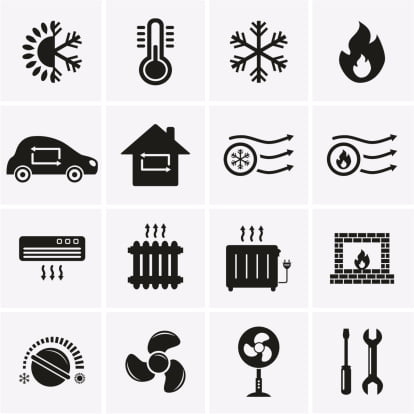
How to drain and refill your heating system to remove and refit a radiator or valve.
There are several reasons you may want to drain your heating system such as removing an old steel radiator to fit a new FARAL Aluminium radiator or to add an inhibitor and cleaner to your heating system water to flush it through to remove lime scale or sludge.
Draining down an open vented heating system:
This method will show you how to close off the feed and expansion tank valve in the roof void, drain down your radiators using the outlet on your radiator valve and then how to refill your heating system.
1.Firstly it is necessary to turn off the gas or electricity supply to the boiler or in the case of a back boiler or solid fuel, make sure it is not lit.
2.In your loft you will have a tank called a feed and expansion tank. It has this name because it has a pipe coming in over the top which if the water gets too hot in your system it can expand, via this pipe into the tank.
3.The water is fed into this tank from the mains via a ball valve. This valve is the same as the one in your toilet cistern. The ball is attached to an arm which closes the valve when it is lifted. When the tank is full of water, no more can get in because the valve is closed. When some water is drawn off, the ball drops, the valve opens and water rushes in to replace it. To ensure no water comes in while you are draining the system down it is an easy job to place a piece of timber across the tank, lift up the valve arm and tie it to the timber. This will close the valve. Keep the valve closed while draining down your heating system
Draining Down Your Heating System
Now connect a hosepipe to the drain nozzle and run it outside to a suitable drain point. Using an adjustable spanner, open up the drain valve and let the water from the system run through the hose. The water will run faster if you open any bleed valves on the radiators starting with the radiators at the top of the building. As the water level drops you can open the bleed valves in the downstairs radiators also. When no more water comes out of the hose you must check that the system has completely finished draining before you start work. There is a chance that some air has got into the system and locked the water from escaping. To remedy this go into the loft and fill the tank with about 6 inches of water by loosening the arm you have tied up. This should, in a few seconds, start running out of the hose. If it does not you have an air lock and should connect the other end of the hose to the cold tap and send a short blast of water back into the radiator you are draining from. Make absolutely sure the hose is well attached to the radiator drain nozzle.
Checklist for Draining Down:
- Check that you have an open vented heating system (Tank in the loft supplying the central heating water)
- Turn off the gas or electricity supply to your boiler or make sure that any solid fuel based boilers are out
- Lock off the ball valve in your feed and expansion tank
- Connect a hosepipe to the drain nozzle on one of your downstairs radiators and run it to a suitable location outside
- Open up the drain valve and let the water drain out of the system
- Open up some of the bleed valves on upstairs radiators to aid drainage
- Check that you have no airlocks in the system preventing full drainage.
- Once fully drained, carry out your desired task
Refilling Your Heating System :
Remove the hose pipe and close the drain cock you used to drain the system and close all the radiator bleed valves that you have opened. Untie the string in the feed tank that is holding the ball cock up in the closed position and let the water fill up the system via the tank. Wait until the tank stops filling and go downstairs to bleed the bottom level radiators. When the downstairs radiators have been bled go upstairs to bleed those radiators, this will ensure your system is filled full of water. It is good practice to add an inhibitor to your system via the feed and expansion tank to prevent corrosion and lime scale in your heating system. Now it is time to relight the boiler. It is possible that as the water heats up you may hear some knocking sounds in the system, the radiators will probably need bleeding again to remove some remaining air once the system is fully heated. Once the system has reached temperature check for leaks.
Checklist for Refilling Your Heating System:
- Remove the hose and close off the drain cock and bleed valves that were open
- Add an inhibitor to your system via the feed and expansion tank
- Unlock the feed and expansion tank valve in your loft and allow the system to refill with water
- Once the system is full of water, bleed all the radiators downstairs and then bleed all the upstairs radiators
- Double check all valves, joints and bleed valves and ensure that they not leaking
- Turn on power supply and relight boiler
- If you hear banging once the system is up to temperature bleed all radiators again starting downstairs
- Check all valves and joints once more for leaks


